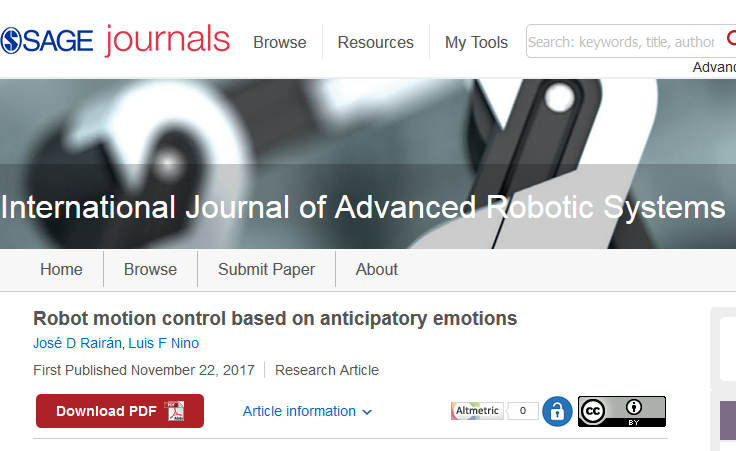Received: January 25, 2017; Accepted: September 17, 2017
doi:10.1177/1729881417743027
Human–robot interaction requires the robot to recognize and convey emotions. Emotions also enhance adaptation by influencing deliberative actions. However, scientists traditionally relegate the emulation of emotions to high levels in multi-level architectures, where those emulated emotions collaborate with reasoning to come up with the best action. In contrast, in this research, we propose the use of emulated emotions at the lowest level of a cognitive architecture, for instance, robot motion control. Thus, the traditional definition of error used by a controller changes in order to include anticipation. The discrepancy between an anticipated ideal state and an anticipated robot state elicits an emotion. This simple emotion-inspired definition of the error improves the controller by more than 11% according to the definition of performance in this article, which argues that robot control architectures should use emulated emotions from their lowest levels.
